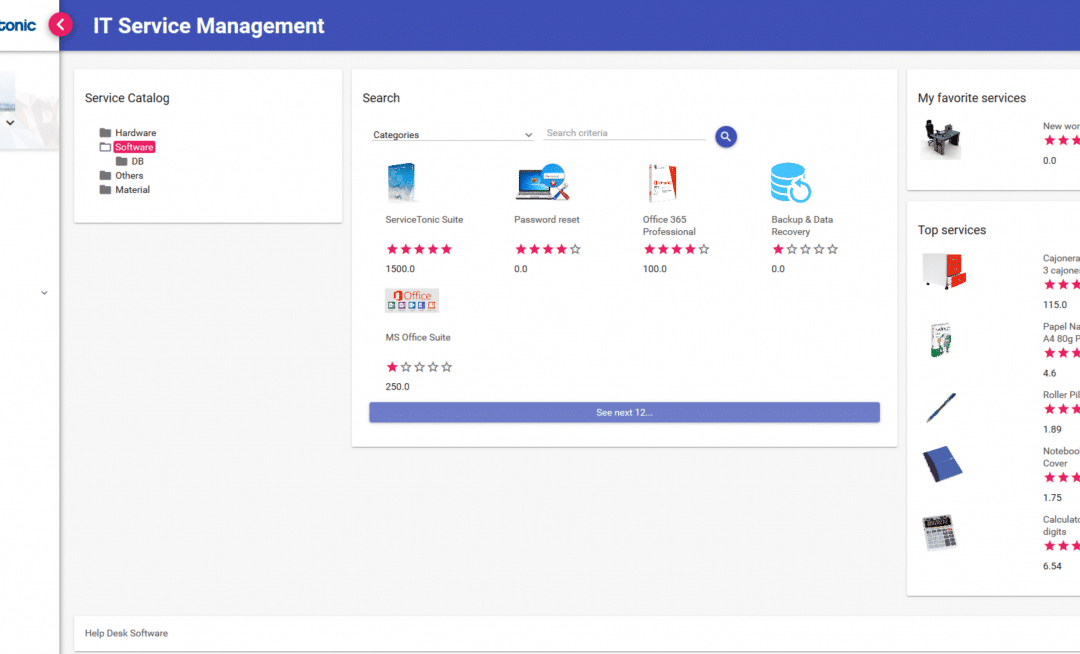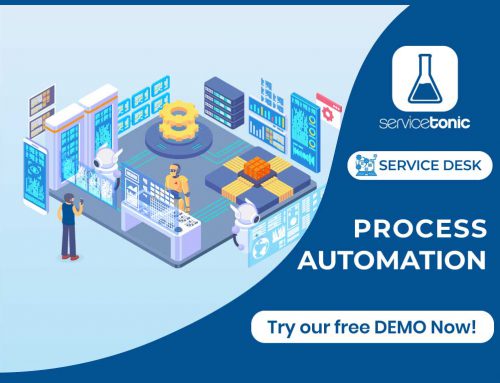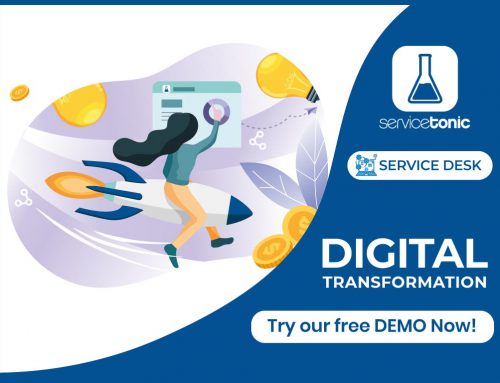Table of Contents
The use of a Service Catalog helps IT departments reduce the cost of service delivery and increase the level of user satisfaction
ITIL recommends managing independently Incident Management from Request Fulfillment the latter closely linked with the use of a Service Catalog makes easily available the set of IT products and services to users.
Using a Service Catalog integrated to Request Fulfillment provides several benefits for the entire organization among which are these top 10:
1. Centralized Management of Request via Service Catalog
Whether if a user needs to request access to an application, retrieving a backup or purchase new equipment, the Service Catalog is the access point to all products and services offered by IT or other departments, providing access to this information and how it is processed.
2. Simplicity for the user
The users request what they need and they receive it without worrying about the process of providing the service
3. Self-service
The use of a Service Catalog greatly facilitates user self-service capabilities, reduces management costs and improves the user experience by providing detailed information about their requests (description, price, delivery, approvals, etc.) and the status of their application.
4. Improvement in business processes
Each product or service can have its own process of processing, based on the data provided by the user. It is not the same to process the registration to a training than to process the provisioning of a PC.
5. Better control
One of the main needs of any IT department is to have maximum control over the entire operation. The use of a Service Catalog with the Request Management process allows traceability of the entire process from application to delivery recording and documenting all the intermediate steps.
6. Standardization of supply
An important benefit of using a Service Catalog is the ability to provide each user with complementary products and services, like eliminating the possibility that someone who should not have access to an application, could apply the access to it, simplifying the Catalog for each user profile and reducing the workload by eliminating the processing of improper applications.
7. Cost reduction
Good Service Catalog reduces the time that the user requires to process applications, allowing these applications to be processed more efficiently and also lets the most qualified IT staff focus on those tasks that bring more value to the organization, reducing total operating costs.
8. Improvement in financial management
Centrally process all requests through the Service Catalog facilitates the allocation of costs associated with each corresponding department or business. Besides, knowing the price of each product or service offered, allows each area to make its budgets more accurately.
9. Increase user satisfaction
Provide the user with a single point where to see everything that IT offers, where to can send your requests and always know the state of the same, not only improves the management of service delivery but also greatly increases the satisfaction of the user.
10. Maximize business benefits
An IT Service Catalog describes each service not only by their characteristics but also by its objectives. This intelligence helps closely align IT services with the business strategy, substantially contributing to the achievement of corporate goals.





